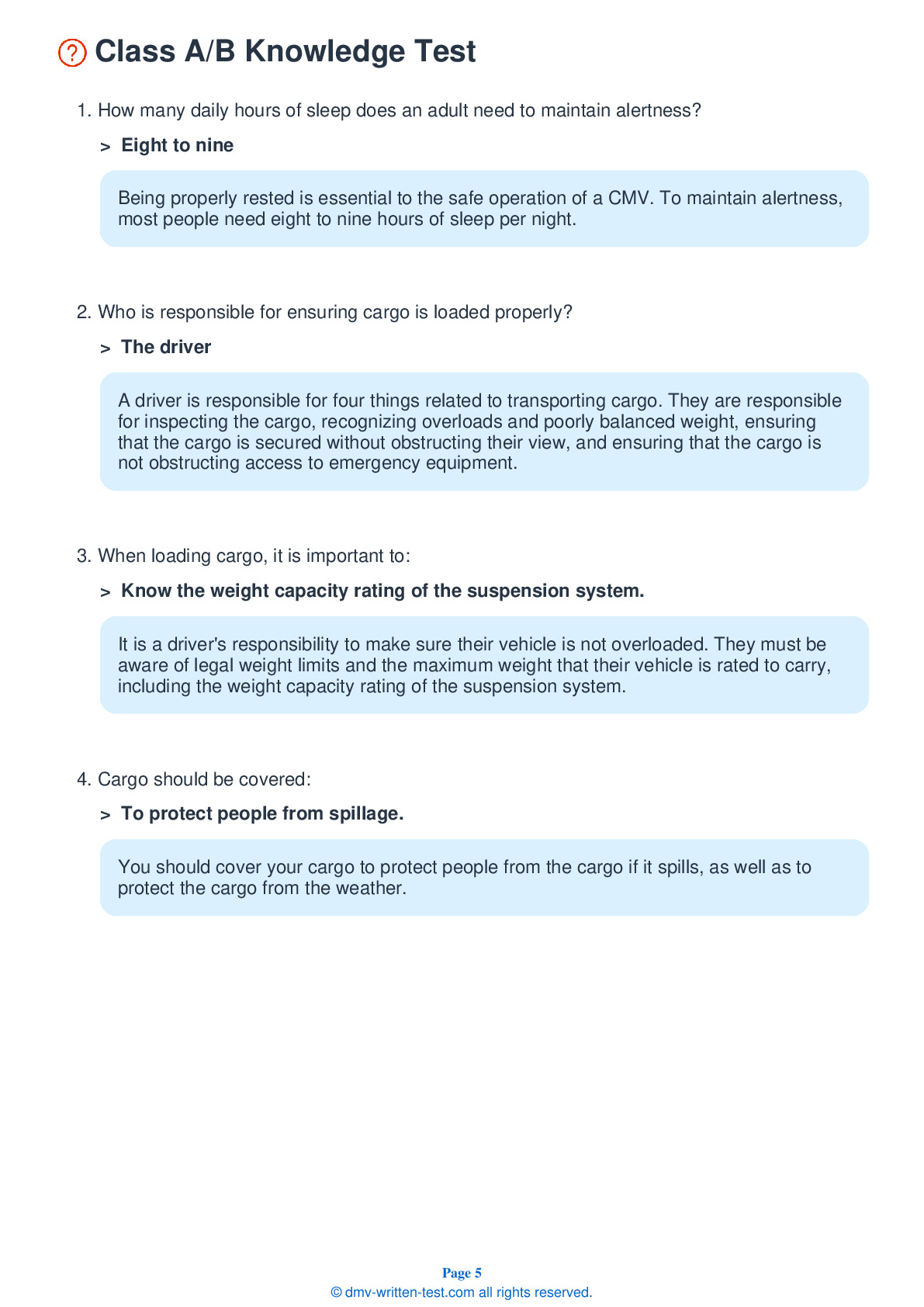Air Brakes
This endorsement is required for driving a vehicle with air brakes. To receive this endorsement, applicants must pass a written test. The test consists of 25 multiple choice questions. Each question has four answer choices. To pass, the applicant must answer at least 20 questions correctly. Test questions come from the Washington D.C. Commercial Driver License Manual. Questions come from the chapter covering: Air Brakes. The Air Brakes endorsement may be used with the Class A, B or C CDL.
Number of Question
Passing Score
1. Most heavy-duty vehicles use:
Explanation
Most heavy-duty vehicles use dual air brake systems, in which there are two separate braking systems operated by a single set of controls. Each system operates the brakes on different axles.
2. Failing to drain the tanks in an air brake system can result in:
Explanation
In an air brake system, the air storage tanks must be drained to remove accumulated water and compressor oil. Failing to do this can cause damage. For example, water that has built up in the system could freeze in cold weather and cause brake failure.
3. To ensure normal stopping power, drivers of vehicles equipped with a front brake limiting valve should:
Explanation
Some pre-1975 vehicles have a front brake limiting valve, which has "normal" and "slippery" settings. The idea behind these valves was to limit the air pressure available to the front brakes when driving on slippery surfaces, and thereby reduce the danger of a front-wheel skid. Studies have found that this is not actually a concern, so if your vehicle has a front brake limiting valve, leave it in the "normal" position.
4. While driving downhill, you should brake until you reach a speed that is ____ below your safe speed, then release the brake pedal.
Explanation
While driving downhill, you should hold down the brake pedal until your vehicle reaches a speed 5 mph below your safe speed, then release the brake pedal. Repeat this process.
5. What kind of force must emergency brakes use?
Explanation
Because air pressure can eventually leak away, the emergency brakes in an air brake system must be held on by mechanical force.
6. During an applied leakage test, the maximum leakage rate for a triple combination vehicle is:
Explanation




